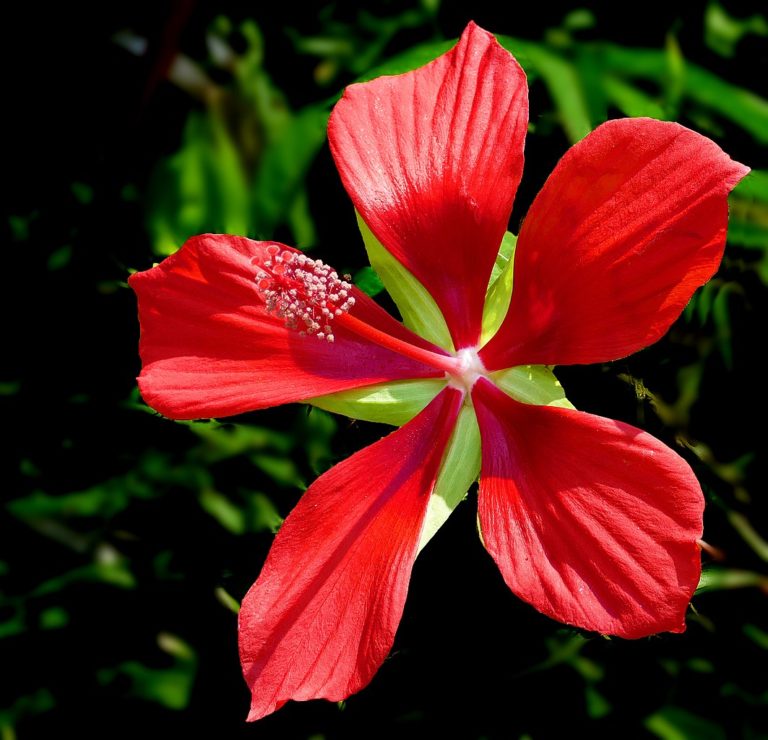Although Scarlet Rosemallow in nature grows in wet places (the Wetland Indicator Status is “Obligate”), this herbaceous perennial thrives in upland gardens, and should be invited to do so! Adjectives such as “statuesque” and “architectural” come to mind. If given a sufficiently large sunny space, Rosemallow will express its full natural form with several sturdy upright stems up to 8 feet tall when mature, bearing dark green, palmately 3-5-lobed, marijuana look-alike leaves and stunning, 6-inch, deeply red blooms. The flowers are both vibrantly red and delicate, with exserted, showy stamens. They last but a day — but new buds continue to open daily over a long bloom season, late summer/early fall. Found in ditches and wet habitats in coastal plane Virginia to Florida and over to Louisiana and Arkansas.
NURSERY HOURS
Wednesday: 10-4 Thursday: 10-6 Friday-Saturday: 10-4 Sunday: 12-4
Hibiscus coccineus

Key Info
Scientific Name: Hibiscus coccineus Walter
Common Names: Scarlet Rosemallow, Red Hibiscus, Swamp Hibiscus, Texas Star Hibiscus, Crimson Rosemallow, Wild Red Mallow
Family Names: Malvaceae (Mallow Family)
Plant Type: Herbaceous perennial
Flower Color: Deep red
Special Characteristics: Showy fruit, Attracts bees, Attracts butterflies, Attracts Hummingbirds, Reported to be deer resistant., Tolerates wet conditions
Additional Info
Habit: Many upright stems, mostly unbranched, from central crown; no basal rosette
Height: 4'-8'
Spread: 4'
Soil Conditions: Moist to wet; silty sand, loamy, organic, clay
Leaves: Hemp-like leaves are palmately compound with 3, 5 or 7 leaflets, deep green, (5-6" wide) with long petioles and pointy tips.
Flowers (or reproductive structures: Bright scarlet-red flowers 3-6" in diameter are borne in the axils of upper leaves. The flowers have five ribbed petals and a prominent center staminal column. Each flower persists only one day, but flowers continue to open daily over a long, mid-summer-to-early-fall bloom period.
Fruit: 3-4 weeks after flowering, large green seed pods ripen into brown, papery, capsules containing many bb-sized, round seeds
Natural Distribution: Marshes, swamp forests, roadside swale and ditches, along streams.
USDA Hardiness Zone: 6 to 9
USDA Wetland Indicator Status in NC: OBL
Pollination: Bees, butterflies, other insects; hummingbirds
Wildlife Connections: Blooms provide nectar to a variety of pollinators including the specialist Rose Mallow Bee and Ruby Throated Hummingbirds. Plants host caterpillars of gray hairstreak, painted lady butterflies and several moths and skippers (New Moon)
Propagation: Scarlet Rosemallow is grown from seed.
